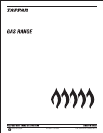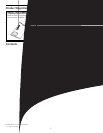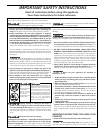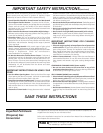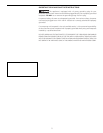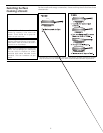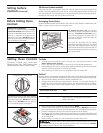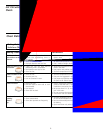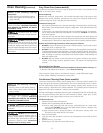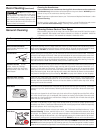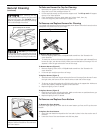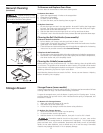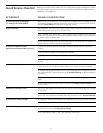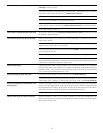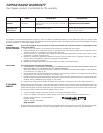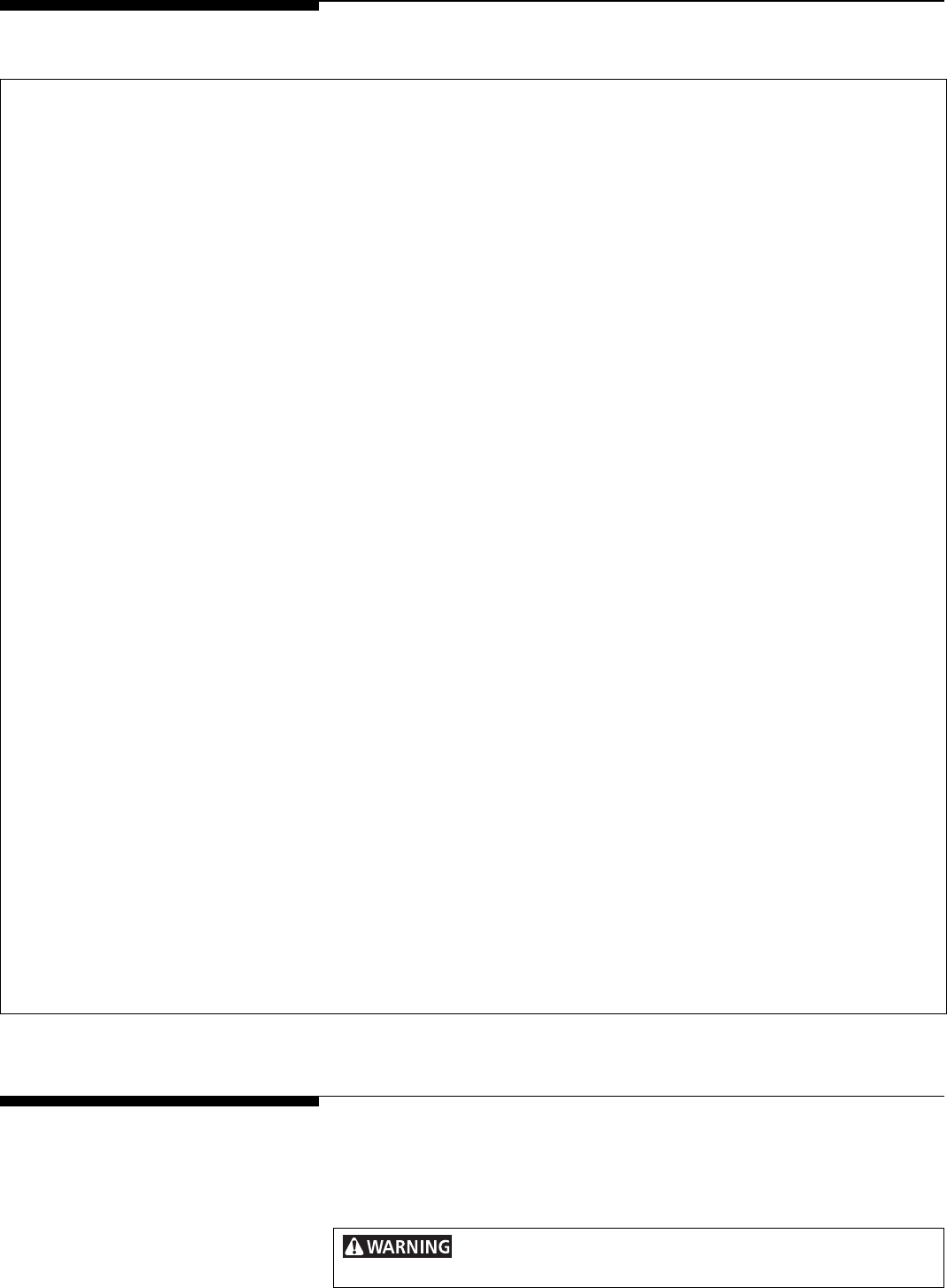
4
IMPORTANT SAFETY INSTRUCTIONS(continued)
SAVE THESE INSTRUCTIONS
Liquefied Petroleum
(Propane) Gas
Conversion
This appliance can be used with Natural Gas or Liquefied Petroleum (Propane) Gas. It is
shipped from the factory for use with Natural Gas.
Refer to the Installation Instructions for conversion from Natural Gas to Propane Gas, or
from Propane Gas to Natural Gas.
Severe shock or damage to the appliance may occur if the appliance is
not installed by a qualified installer.
undersized utensils will expose a portion of the burner flame to
direct contact and may result in ignition of clothing. Proper
relationship of utensil to flame will also improve efficiency.
• Utensil Handles Should Be Turned Inward and Not Extend
Over Adjacent Surface Burners—To reduce the risk of burns,
ignition of flammable materials, and spillage due to unintentional
contact with the utensil, the handle of the utensil should be
positioned so that it is turned inward, and does not extend over
adjacent surface burners.
• Never Leave Surface Burners Unattended at High Settings—
Boilovers cause smoking and greasy spillovers that may ignite, or
a pan that has boiled dry may melt.
• Protective Liners—Do not use aluminum foil to line surface
burner pans, oven bottom or any other part of the range. Use of
protective liners or aluminum foil may interfere with heat and air
distribution, and combustion. Damage to the range or personal
injury may result.
• Glazed Cooking Utensils—Only certain types of glass, glass/
ceramic, ceramic, earthenware, or other glazed utensils are
suitable for rangetop service without breaking due to the sudden
change in temperature. Check the manufacturer's
recommendations for rangetop use.
• Do Not Use Decorative Surface Burner Covers. If a burner is
accidentally turned on, the decorative cover will become hot and
possibly melt. You will not be able to see that the burner is on.
Burns will occur if the hot covers are touched. Damage may also
be done to the cooktop or burners because the covers may cause
overheating. Air will be blocked from the burner and cause
combustion problems.
IMPORTANT INSTRUCTIONS FOR USING YOUR
OVEN
• Use Care When Opening Door—Stand to the side of the range
when opening the door of a hot oven. Let hot air or steam escape
before you remove or replace food in the oven.
• Keep Oven Vent Ducts Unobstructed. The oven is vented below
the backguard. Touching the surfaces in this area when the oven
is operating may cause severe burns. Also, do not place plastic or
heat-sensitive items on or near the oven vent. These items could
melt or ignite.
• Placement of Oven Racks. Always place oven racks in desired
location while oven is cool. If rack must be moved while oven is hot,
use extreme caution. Use potholders and grasp the rack with both
hands to reposition. Do not let potholders contact the oven
burner flame or interior of the oven. Remove all utensils from the
rack before removing rack.
• Do not use the broiler pan without its insert. The broiler pan and
grid allow dripping fat to drain and be kept away from the high heat
of the broiler.
• Do not cover the broiler grid with aluminum foil. Exposed fat
and grease could ignite.
• Do not touch a hot light bulb (some models) with a damp
cloth. Doing so could cause the bulb to break. Disconnect the
range or turn off the power to the range before removing and
replacing light bulb.
IMPORTANT INSTRUCTIONS FOR CLEANING
YOUR RANGE
• Clean the range regularly to keep all parts free of grease that
could catch fire. Pay particular attention to the area underneath
each surface burner. Exhaust fan ventilation hoods and grease
filters should be kept clean. Do not allow grease to accumulate.
Greasy deposits in the fan could catch fire. Refer to the hood
manufacturer's instructions for cleaning.
• Kitchen cleaners/aerosols—Always follow the manufacturer's
recommended directions for use. Be aware that excess residue
from cleaners and aerosols may ignite causing damage and/or
injury.
CONTINUOUS CLEANING OVENS (some models):
• Do not use oven cleaners on the oven liner or any of the
continuous cleaning surfaces. Continuous cleaning surfaces can
be identified by their rough surface finish.
SELF-CLEANING OVENS (some models):
• Clean in the self-cleaning cycle only the parts of the oven listed
in this owner's guide. Before self-cleaning the oven, remove the
broiler pan and any utensils stored in the oven.
• Do not clean the oven door gasket. The door gasket is essential
for a good seal. Care should be taken not to rub, damage or remove
the gasket.
• Do not use oven cleaners. No oven cleaner or oven liner protective
coating of any kind should be used in or around any part of the
oven.



